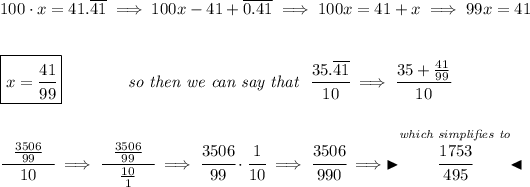the way to do these recurring decimals is by firstly separating the repeating part or recurring part and then multiply it by some power of 10 so we move it to the left, lemme show

now, let's multiply that repeating part by some power of 10 that moves the 41 to the left, well, we have two repeating decimals, 4 and 1, so let's use two zeros, namely 100 or 10², thus
